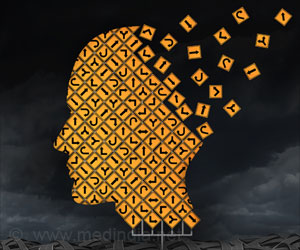Eye movement science is helping us learn about how we think
- German technology aids in tracking eye movement to comprehend one's thought process
- This can aid various artificial intelligence models in understanding the human thought process //
- To acquire a more accurate picture of someone's thinking while solving a problem, artificial intelligence may be able to combine eye monitoring with other signs such as heart rate or changes in brain activity
Eye movement patterns in complex tasks: Characteristics of ambient and focal processing
Go to source). For most of human history, if you wanted to know what was going on behind someone’s eyes, you had to guess. However, scientists have been investigating how eye movements can help read people’s thoughts since the 1960s. The power to listen in on people’s daydreams and inner dialogues is still science fiction. However, science is assisting us in learning more about the links between our eyes and our mental state.
The ability to track thinking processes can help minimize potentially fatal disconnects between humans and machines. The results of combining psychology research on eye tracking with AI could revolutionize computer interfaces and be a game changer for those with learning impairments.
The first forms of eye movement monitoring technology were developed in the 1960s by pioneering scientist Alfred Yarbus. Suction caps were placed over the participant’s eyes at the time, and reflected light traced their point of focus.
Yarbus discovered that we are continually adjusting our sight, focusing on various aspects of the scene in front of us. With each eye movement, different elements of the world come into sharp focus, while others at the periphery of our vision blur. We can't take it all in at once.
We do not sample the scene at random. Yarbus encouraged individuals to look at a painting in his renowned 1967 study.
The eyes roam quickly over long distances in ambient mode to gain a general sense of fascinating targets. It is used to help with spatial orientation. Then, when we process information more thoroughly, we focus on it for longer periods.
The test subjects were instructed to assemble a Rubik’s cube using a model. The visual stimuli remained constant, but participant’s eye movements indicated that they were in ambient mode when information was received. The pattern of participant’s eye movements changed as they progressed through the task, such as selecting a puzzle piece.
Looking into the Future
According to this study, a technology designed to collaborate with a human operator could employ eye tracking to follow its user’s mental process. The team recently created a system that displayed multiple displays on a computer screen simultaneously.The program tracked people’s eye movements to determine what information they were looking at and where they should look next, using artificial intelligence to generate arrows and highlights on the screen. Using AI approaches on eye tracking data can also help determine whether a person is sleepy or diagnose other learning impairments, such as dyslexia.
In the future, AI may be able to combine eye tracking with other indicators like heart rate or changes in brain activity to gain a more accurate picture of someone’s thoughts while solving a problem. The dilemma is whether we want computers to understand what humans are thinking.
Reference:
- Eye movement patterns in complex tasks: Characteristics of ambient and focal processing - (https://doi.org/10.1371/journal.pone.0277099)
Source-Medindia
















